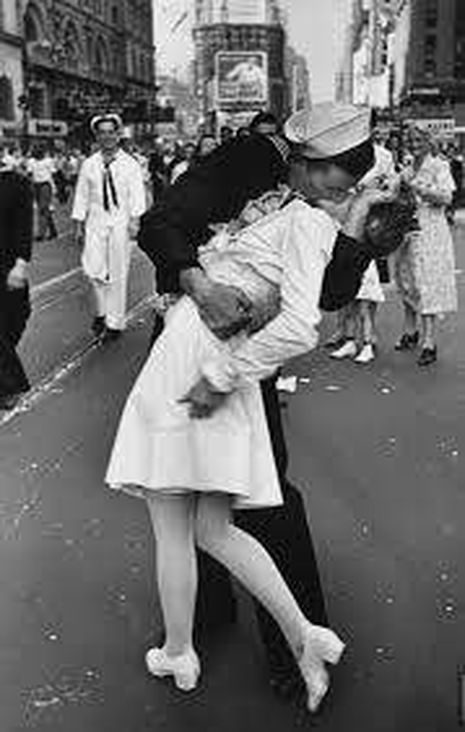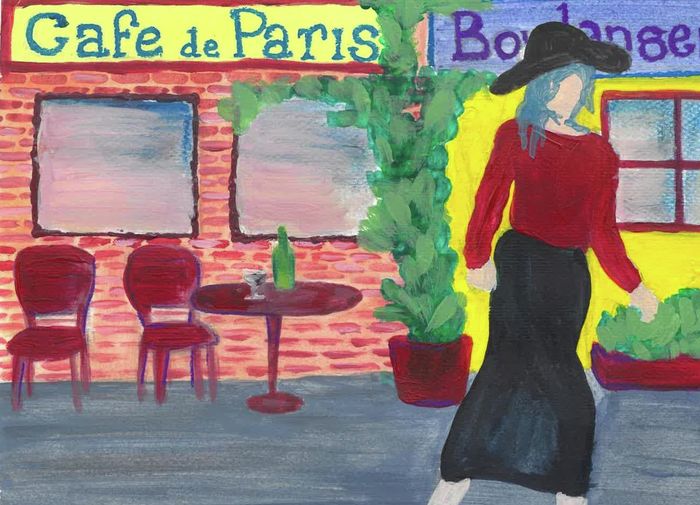Cantaloupes, pubic hair and the rising threat of surveillance: when does art go ‘too far’?
Inspired by the scandal over Jeff Mermelstein’s latest project, Sofia Johanson debates what privacy means in the modern art world
New York based photographer Jeff Mermelstein recently released the contents of his latest project, #nyc, in book-form. Each sky-blue page shows a picture of a text conversation taken over the shoulder of an unsuspecting subject. Some have taken a romantic view of the collection; the book captures candid moments of love, lust, loss, humour, darkness, death, and every other literary theme and human emotion imaginable. But for others, the book represents the growing presence of surveillance and the way voyeurism is becoming more acceptable, not just in art, but in the wider public sphere as well.
“Mermelstein is not the first to make his viewer uncomfortable with the privilege of seeing something they are not supposed to”
Some messages are hardly incriminating: nonsensical musings on butternut squashes, cantaloupes and tomatoes, as well as a screengrab about how long one can keep sausages out of the fridge. There is also much correspondence about current affairs, laments about coronavirus, rants about the direction the USA is headed and general grumbling about universal issues. Surely exhibiting these kinds of conversations to the public isn’t particularly offensive?
Nonetheless, there are more intimate conversations that puncture the cheerful tone: a mention of chemotherapy, an announcement of pregnancy and the pain felt by two people who simply miss each other. These conversations remind the viewer that they have gained privileged access to a very private part of someone else’s life, and the fact that the subject has no knowledge that their innermost torments or joys are being aired to the public makes the sense of voyeurism far more obvious and malign.

Mermelstein argues that his subjects have retained their anonymity because their names have been cropped from the images. The only clues the viewer has of their identity are their hands (immaculately painted nails, cigarettes dangling between fingers) and their devices, some shiny and hi-tech, others whose messages are barely visible between cracks in the screen.
One could argue that the content or theme of the messages and the supposed anonymity of their authors is irrelevant, as the artist has invaded his subject’s privacy. But it is worth bearing in mind that the most powerful street photography is composed of totally spontaneous moments, normally always captured without the subject’s consent. Think of the iconic image of the sailor kissing a woman in a white dress in Times Square on V-J Day, immortalised by Alfred Eisenstaedt, who just happened to be passing by. The candid nature of street photography would perish if the artist was required to ask for permission before taking a picture, yet it’s clear why people are uncomfortable with the idea of their intimate conversations being seen as well as saved for posterity for the sake of art.
This opens the debate surrounding ownership in the public sphere, and whether you can truly own what other people have visual access to. Emily Ratajkowski’s recent essay in New York magazine explored this, as she revealed that she was sued by a paparazzo after she posted a photo he took of her on her instagram. Who has the right to that image? The subject, the photographer, or everyone who can see it?
It is obvious that Mermelstein is not the first to make his viewer uncomfortable with the privilege of seeing something they are not supposed to; voyeurism has always been a prevalent theme within art, it has just taken on a new significance in the age of surveillance.
Michelangelo’s Last Judgement caused uproar within the Church because the depiction of naked bodies in the Sistine Chapel was thought to be abhorrent; Francisco Goya’s Naked Maya was perceived as profane at the time because it was the first image to depict female pubic hair, and the naked, spread-eagled body in Courbert’s Origin of the World understandably caused shock and disgust when it was completed in 1866.
Although these three images all depict physical nudity, arguably, Mermelstein’s project makes his subject just as vulnerable by exposing them emotionally.
His project also reflects the increased level of surveillance that has become part and parcel of modern living. His work is published at a time when the Moscow government are installing complex camera systems in Russia’s capital to keep track of its residents, (ostensibly to control the spread of coronavirus) and people fear that their Alexas are listening in to their dinner-time conversations where they discuss how dry their hair is and are suddenly bombarded with adverts for organic conditioner on Facebook.
We now expect to be watched by governments and large tech firms, but that does not make us any more comfortable with the idea of an artist exploiting our vulnerability so that he can capture and collect our most intimate moments. In fact, the project may even raise the level of paranoia felt by some as it highlights the fact that the spaces that are truly private and ‘our own’ are becoming fewer and farther between.
Whether you view #nyc as a blatant invasion of privacy or as a light-hearted, innovative commentary on the way we communicate, Mermelstein’s newest work certainly opens new avenues of debate surrounding the question of whether it is possible for an artist to go ‘too far’ in order to create something striking.
 Features / How sweet is the en-suite deal?13 January 2026
Features / How sweet is the en-suite deal?13 January 2026 Comment / Will the town and gown divide ever truly be resolved?12 January 2026
Comment / Will the town and gown divide ever truly be resolved?12 January 2026 News / 20 vet organisations sign letter backing Cam vet course13 January 2026
News / 20 vet organisations sign letter backing Cam vet course13 January 2026 Arts / Fact-checking R.F. Kuang’s Katabasis13 January 2026
Arts / Fact-checking R.F. Kuang’s Katabasis13 January 2026 Music / Inside Radiohead’s circle13 January 2026
Music / Inside Radiohead’s circle13 January 2026










